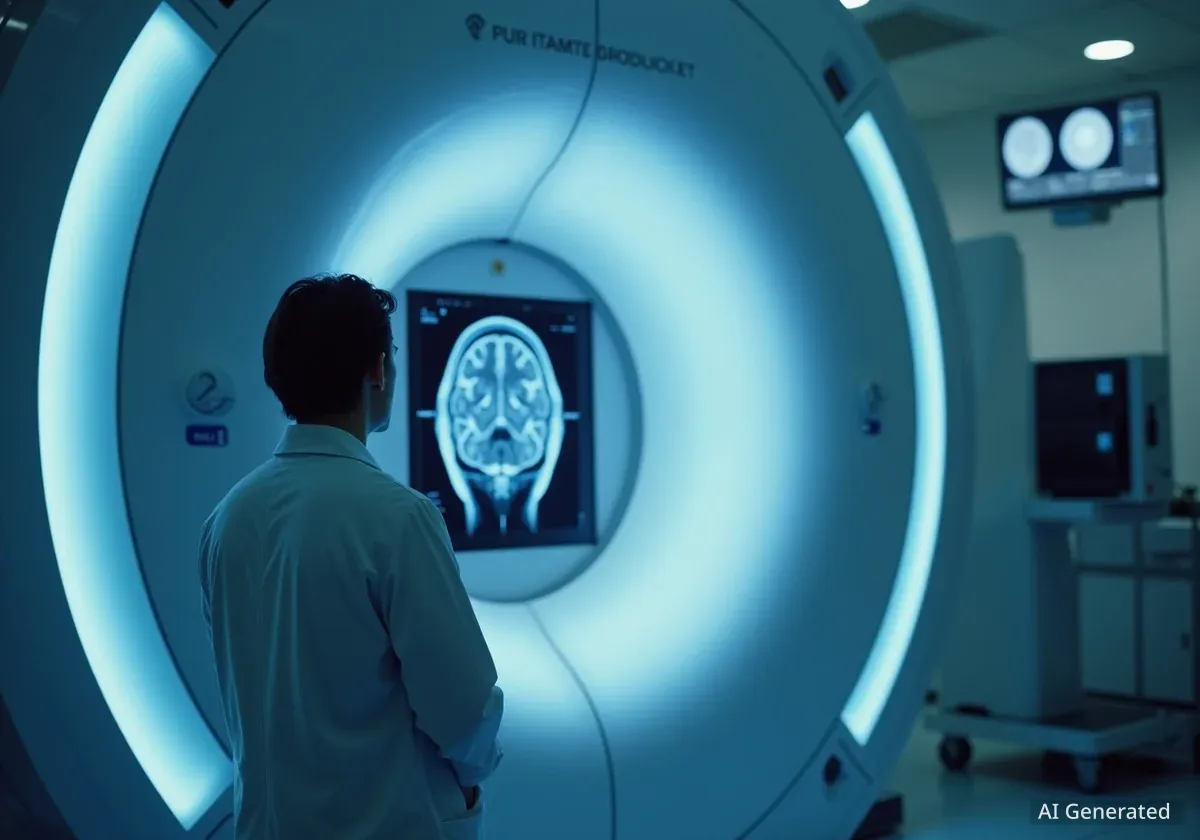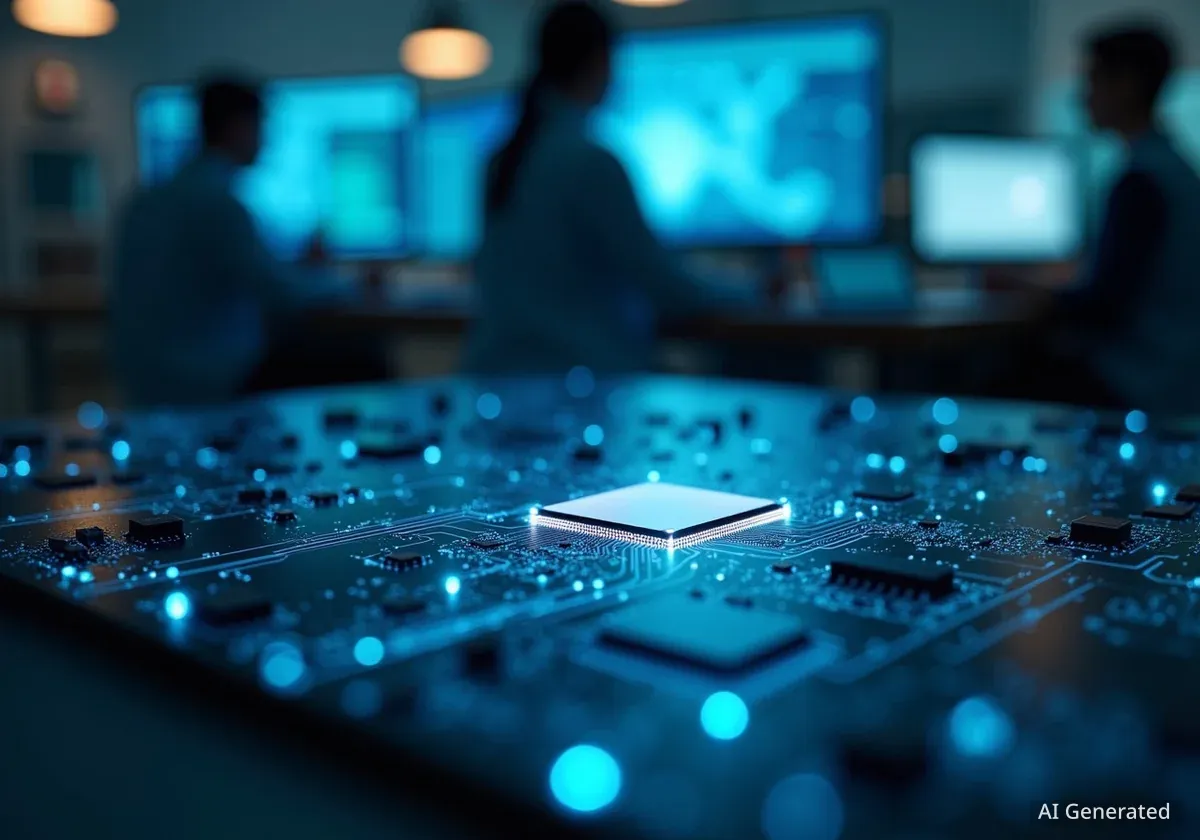Researchers at Guizhou University have developed a new deep learning model that improves the efficiency and accuracy of Diffusion Tensor Imaging (DTI), a critical technique for mapping the human brain's microstructure. The model, named QCG-DTI, allows for high-quality brain scans using minimal data and more flexible imaging procedures.
This development addresses a significant limitation in current methods, which often require rigid and predefined data collection schemes. By overcoming this obstacle, QCG-DTI could make advanced brain imaging more accessible and adaptable in clinical and research settings.
Key Takeaways
- Researchers created a new deep neural network called QCG-DTI for Diffusion Tensor Imaging (DTI).
- The model eliminates the need for fixed q-space sampling schemes, increasing the flexibility of brain scans.
- QCG-DTI significantly improves accuracy, reducing error rates by up to 25% compared to existing methods.
- This technology can produce high-fidelity brain maps from a smaller amount of imaging data, speeding up the process.
The Challenge in Modern Brain Mapping
Diffusion Tensor Imaging (DTI) is a non-invasive MRI technique used to visualize the structural connectivity of the brain. It works by tracking the movement of water molecules through the brain's white matter tracts, which act as the communication pathways between different brain regions.
Doctors and scientists use DTI to study brain development, diagnose neurological conditions like multiple sclerosis, and plan surgeries. However, traditional DTI requires collecting a large number of diffusion-weighted (DW) images, which can be time-consuming for patients.
What is Q-Space Sampling?
In DTI, q-space refers to the parameters used to measure water diffusion in different directions and strengths. A sampling scheme is the specific set of these parameters chosen for an MRI scan. Many current AI models are trained on data from one specific, fixed scheme, meaning they cannot accurately process data collected using a different set of parameters.
In recent years, deep learning has been used to speed up this process by estimating the final brain map from fewer DW images. The major drawback of these AI methods is their reliance on fixed q-space sampling schemes. This means the AI is trained on data collected in a very specific way and cannot adapt if the imaging parameters change, limiting its real-world usefulness.
A Flexible AI Solution: QCG-DTI
To solve this problem, a research team from the State Key Laboratory of Public Big Data and College of Computer Science and Technology at Guizhou University designed the Q-space-coordinate-guided diffusion tensor imaging (QCG-DTI) network.
The primary goal of QCG-DTI is to create a robust system that can accurately estimate diffusion tensors regardless of the sampling scheme used during the scan. This flexibility is crucial for clinical applications where scanning protocols may vary between hospitals or even patients.
Core Technological Innovations
The QCG-DTI model incorporates three key components that work together to achieve its high performance and flexibility:
- Q-space-coordinate-embedded feature consistency: This strategy ensures that the AI understands the direct relationship between the specific diffusion measurement parameters (the q-space coordinates) and the resulting image data.
- Q-space-coordinate fusion (QCF) module: This innovative module embeds the q-space coordinate information directly into the image features the network is analyzing. It does this by adjusting the feature maps, effectively teaching the AI how to interpret data from any sampling scheme.
- Multiscale feature residual dense (MRD) module: To improve the overall quality of the final image, this module uses a dual-branch approach to extract details at different scales, enhancing both feature extraction and image reconstruction.
Together, these features allow the network to learn the underlying physics of water diffusion rather than just memorizing patterns from a fixed dataset. This results in a more intelligent and adaptable imaging tool.
Proven Performance Across Multiple Datasets
The effectiveness of QCG-DTI was not just theoretical. The researchers conducted extensive experiments using three diverse and well-regarded datasets to validate their model's performance.
Testing Datasets Used
- Human Connectome Project (HCP): A large-scale project to map the neural pathways of the healthy adult human brain.
- Developing Human Connectome Project (dHCP): Focuses on brain development in fetuses and newborns.
- Multicenter Dataset of Multishell Diffusion MRI (MDM): Contains data from various sources, testing the model's ability to handle diverse inputs.
The results demonstrated that QCG-DTI consistently outperformed state-of-the-art deep learning methods that depend on fixed sampling. Even when using flexible and varied q-space sampling schemes, the new model produced superior results.
Significant Improvements in Accuracy
The quantitative results were particularly impressive. According to the study published in Frontiers of Information Technology & Electronic Engineering, QCG-DTI achieved substantial reductions in error rates for key DTI-derived metrics.
"Compared with state-of-the-art methods relying on fixed sampling schemes, QCG-DTI can obtain high-quality diffusion tensors and derived parameters even when using DW images acquired with flexible q-space sampling schemes."
Specifically, the model reduced the mean absolute error by approximately 15% for fractional anisotropy (FA), a measure of how directional water diffusion is. It also achieved an even greater reduction of around 25% for mean diffusivity (MD), which measures the average rate of water diffusion.
Implications for Clinical Practice and Research
The advancements offered by QCG-DTI have significant real-world implications. The model's robustness was further confirmed in tractography analysis, which involves reconstructing the brain's major white matter pathways. QCG-DTI was able to reconstruct these tracts more accurately than other methods.
For clinicians, this technology could mean faster scan times for patients without sacrificing diagnostic quality. The flexibility to use different scanning protocols would also make it easier to adopt advanced DTI analysis across different MRI machines and institutions.
In neuroscience research, QCG-DTI could facilitate the comparison and combination of data from different studies, even if they used varied imaging parameters. This could accelerate discoveries about brain structure and function in both healthy and diseased states. The research paper, authored by Maokun ZHENG and colleagues, provides a foundation for more adaptable and powerful AI tools in medical imaging.





